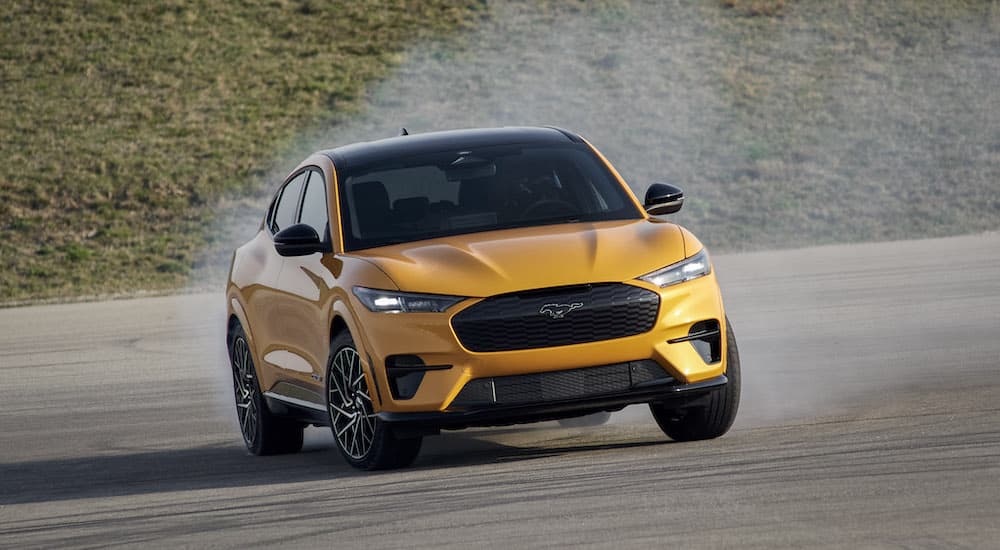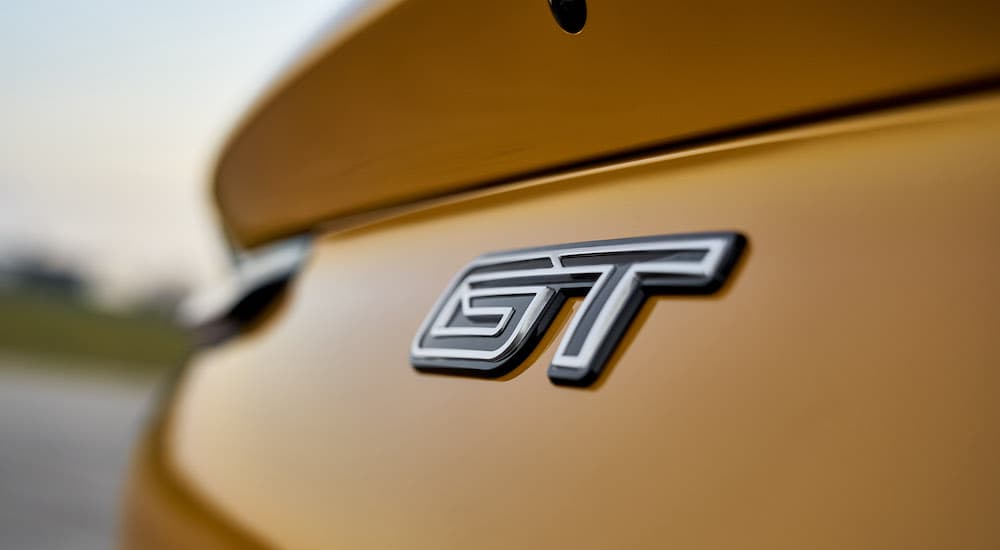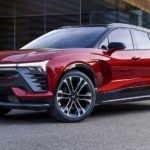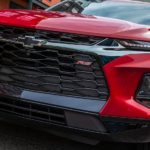Here’s a sentence I never expected to type: the Chevy Blazer is set to give the Ford Mustang a serious run for its money. Of course, the context here is important—I’m not talking about your standard Blazer or the prototypical pony car. I’m referring to the Ford Mustang Mach-E vs Blazer EV, specifically the upcoming Blazer EV SS model that Chevy has started teasing. The words “Chevy Blazer” don’t exactly evoke a sense of raw power or tearing up the track, but it’s clear that Chevy is looking to shake things up a bit (though, in fairness, the “SS” letters definitely bring that kind of performance to mind among car-lovers).
Many people thought Ford was crazy when they announced the Mustang Mach-E—the very idea of a Mustang SUV was heresy to more than a few auto enthusiasts out there. Yet, the Mach-E has proven incredibly popular (just ask anyone who’s tried to get one without lucking out on a pre-order) and proven that battery-electric vehicles (BEVs), even SUVs, don’t have to be dull or unimpressive. Chevy seems to have been taking notes, and while they might not be doing something crazy like introducing a Corvette SUV of their own, they’re certainly designing the upcoming Blazer EV to be serious competition for Ford’s offering.
How the Mustang Mach-E Set the Stage
There’s no denying that the announcement of the Ford Mustang Mach-E sent some shockwaves through much of the car market and amongst enthusiasts. For decades, a Mustang was one thing—the quintessential pony car designed to perfectly combine powerful style and bold performance. Then, suddenly, Mustang wasn’t just a singular entity anymore; it was part of a larger collection of models sharing a name.
The introduction of the Mach-E was a double-tap of unexpected change; not only was it an SUV, but it was also a BEV model. It wasn’t enough for Ford to introduce something new with the Mustang name; they swung for the fences, and many people were freaked out or angry about it. I’d argue that it watered down the identity of the Mustang name a bit, but not necessarily in a negative way, just simply changing it.
While some people still balk at the very notion of a Mustang SUV, it’s also become quite clear that a lot of drivers are into it. It helps that Ford delivered a BEV SUV that lives up to the legacy and reputation of that Mustang name with fantastic performance. There are several different Mach-E models available, including some with a single-motor rear-wheel drive (RWD) system and others with a dual-motor all-wheel drive (AWD) system. Even the standard Select trim with AWD can go from 0 to 60 in just 5.2 seconds—the performance-focused GT model is even more impressive. This truly established the Mach-E as an SUV that has been designed for performance fans out there.
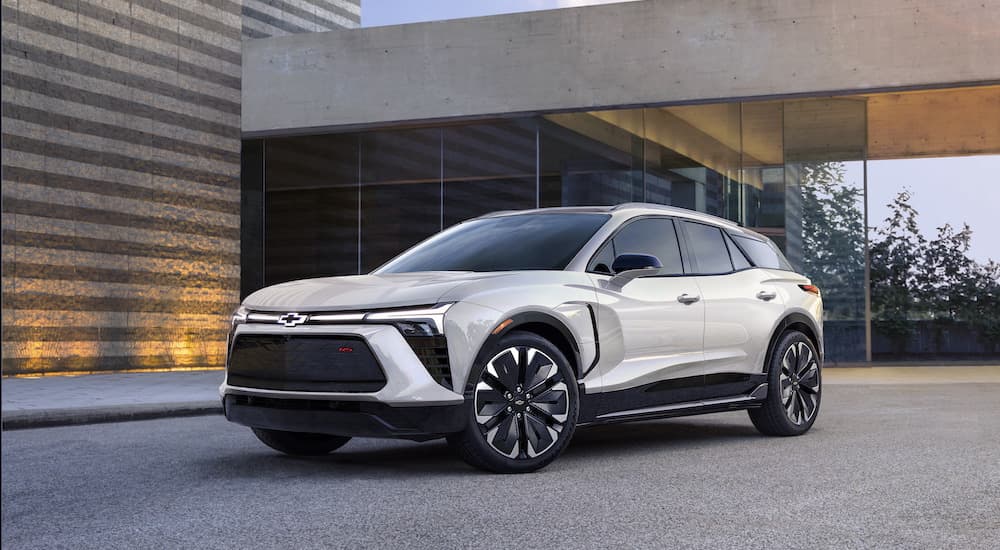
The Blazer EV SS: Shots Fired Across Ford’s Bow
Seeing the success of the Mustang Mach-E likely influenced what Chevrolet has been doing with their BEV SUV development. Whether they wanted to avoid some of Ford’s controversy or simply preferred to keep the identity of their performance vehicles intact, Chevy didn’t quite go the same way by introducing a new Camaro or Corvette SUV. Instead, they stuck with a name familiar to drivers interested in SUVs with the Chevy Blazer EV, but they’re delivering a performance that’s clearly taking aim at models like the Mach-E.
Chevrolet has invested a tremendous amount of time and money into developing its Ultium BEV platform, and while we don’t know how well that will pay off, the early results seem promising. The Blazer EV is built on this platform, which means their engineers can learn from the development of other models like the GMC Hummer EV to streamline the process and deliver impressive BEV models quickly. This also makes it easy for Chevy to develop several models of the Blazer EV simultaneously to offer numerous options.
When Chevy first announced the Blazer EV, we assumed it was a basic BEV SUV designed for mass appeal. What got my attention, however, was when they revealed the SS model, designed with a focus on performance and power. The other trims might be intended for a wide range of drivers, but the Blazer EV SS was engineered and named to evoke an emotional response in any Chevy fan, and the specs they’re bragging about at the moment certainly look impressive.
How the Specs Compare
With both the Ford Mustang Mach-E and the Chevy Blazer EV, there are numerous models available with different focuses. You can choose from good all-around options designed for a variety of drivers or pick one with a focus on either long driving range or bold performance. To compare these two models directly is tricky because of the range of trims available and the significant variety of engineering each has. I don’t want to get too lost in this comparison, so let’s put two options from each head-to-head—the long-range model and the performance version.
The Mach-E designed for optimal range is the California Route 1 trim with the Mach-E’s available extended-range battery and RWD (AWD cuts into the range a bit). With this setup, the Mache-E can get up to 314 miles of range from a full charge. On the other hand, the Blazer EV has the RS trim, designed to look stunning and deliver the best range possible. The Blazer EV RS, again with RWD rather than AWD, can get an estimated 320 miles of range from a full charge. Honestly, these are essentially the same because real-world driving conditions will likely make up for that 6-mile difference.
In terms of performance, the Mustang Mach-E has the GT trim, which is really at its best if you choose the available Performance Edition package (I think it’s silly you have to spring for an extra package for this, but it is what it is). The Mach-E GT Performance Edition has an all-electric powertrain that delivers 480 hp and 634 lb-ft of torque, with the ability to go from 0 to 60 in just 3.5 seconds. Over at Chevy, we have the Blazer EV SS, a legendary pair of letters that tells you everything you need to know about what this model is designed to do. The Blazer EV SS has an all-electric powertrain that delivers 557 hp and 648 lb-ft of torque when you use its Wide Open Watts mode, which is essentially an electric launch control system. This model can go from 0 to 60 in less than 4 seconds, but that’s as specific as Chevy has been.
Which Will Come Out on Top?
As you can see, these two BEV SUVs are pretty evenly matched in terms of performance and start at similar price points. The biggest thing right now is that the Blazer EV is an untested product since it won’t be available until about a year from now, while the Mustang Mach-E has already started earning fans, though it’s very hard to get. Real-world testing for the Blazer EV SS will be a priority for many news outlets, and when those numbers and reviews start coming in, it will be interesting to see how they stack up. Extra features like the Blazer EV’s standard 17.7-inch Infotainment display and available Super Cruise hands-free driving system could be what give it the lead, but we’ll have to wait and see. Either way, it’s great to see this kind of competition, and it hints at the potential to see every major manufacturer push their designers and engineers to deliver the best BEV models possible.
